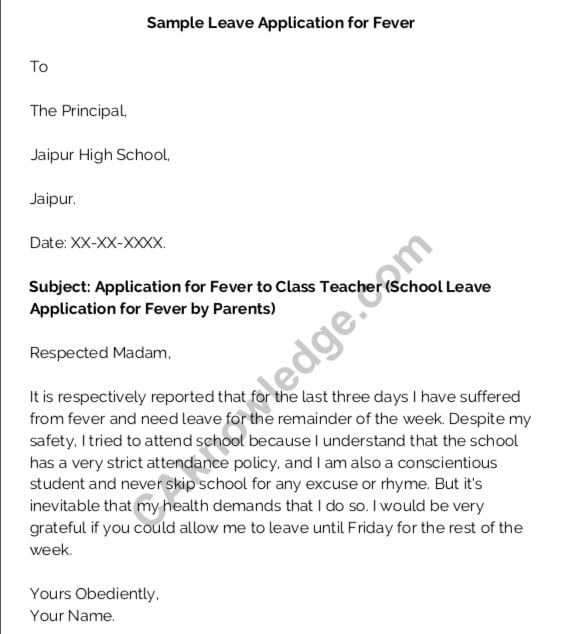Blog
wellhealthorganic.com/how-to-build-muscle-know-tips-to-increase-muscles
Anyone seeking to enhance their overall physical fitness and appearance should prioritize the development of strong muscles. Strengthening muscles not only contributes to improved overall health but also boosts self-assurance. By following proven, natural approaches to muscle growth as recommended by reputable health sources, individuals can attain their desired objectives.
Embarking on the journey toward building resilient muscles involves regular exercise, consumption of wholesome organic foods abundant in protein, and participation in weightlifting exercises.
While increasing the frequency of fundamental workouts, engaging in weightlifting, and maintaining a protein-rich diet can bolster strength, genuine muscle growth necessitates pushing muscles beyond their limits and allowing sufficient time for recovery and regeneration. It is crucial to ensure that workouts are targeted and effective, concentrating on the specific muscles targeted for enhancement.
Lack of progress in muscle development may result from inconsistent training or neglecting to adhere to proper health practices conducive to natural muscle growth. In the subsequent discussion, we will present valuable insights to accelerate the muscle-building process.

Basics of Building Muscle
Skeletal muscles, organized as cylindrical fibers running in parallel, generate force by contracting, facilitating all outward human movements. The human body continuously replenishes and reutilizes amino acids, which are the fundamental components of proteins, within these muscles. If the removal of proteins surpasses their deposition, muscle mass decreases; if synthesis and breakdown maintain equilibrium, muscle mass remains constant; and if deposition outweighs removal, muscle mass increases.
Achieving muscle growth relies on increasing the rate at which proteins are deposited while simultaneously reducing breakdown rates, a process known as muscle hypertrophy, which is essential for achieving goals in resistance training.
Several factors contribute to muscle growth, including hormones such as testosterone and growth hormone, as well as the availability of amino acids and nutrients.
Effective methods for increasing protein synthesis and constructing new muscle tissue include resistance training and ensuring sufficient protein and nutrient intake.
The optimal intensity of resistance training stimulates a hormonal response that supports muscle growth, provided there are enough protein and energy resources to promote gains over losses.
While ongoing research explores various strategies to maximize muscle growth, it remains evident that resistance training with moderate to heavy loads, combined with increased protein intake, is the most effective approach for increasing muscle mass.

The Vital Role of Nutrition in Muscle Building
Just like a high-performance engine depends on premium fuel, your body requires a steady supply of essential nutrients to support muscle growth. Adequate nutrition forms the cornerstone of any effective muscle-building regimen, and the advice offered by wellhealthorganic.com emphasizes the importance of maintaining a balanced diet rich in:
- Lean proteins:
- Essential for rebuilding and renewing muscle fibers after intense workouts.
- Facilitate the regeneration process during strenuous exercise.
- Complex carbohydrates:
- Provide sustained energy levels for extended and rigorous workout sessions.
- Support muscle recovery by replenishing glycogen stores.
- Healthy fats:
- Assist in hormone synthesis, aiding in overall bodily functions.
- Enhance nutrient absorption and contribute to general well-being.
- Vitamins and minerals:
- Crucial for recovery post-exercise, aiding in tissue repair and energy restoration.
- Support energy production and optimize muscle function during workouts.
The guide delves into the significance of mindful eating, surpassing mere considerations of macronutrient ratios, and instead emphasizing the quality of food selections and their impact on overall health and muscle-building capabilities.

Train Smarter, Not Harder: Optimal Muscle-Building Techniques
While dedication and exertion are undoubtedly important, achieving success in muscle building relies heavily on the application of effective training methodologies. The guidance offered by wellhealthorganic.com introduces a potent combination of compound exercises, isolation movements, and the essential concept of progressive overload.
Compound exercises, such as squats, deadlifts, and bench presses, engage multiple muscle groups simultaneously, promoting functional strength and initiating overall muscle growth. Conversely, isolation movements target specific muscles, allowing for focused improvement and refinement of desired areas.
However, the key catalyst for sustained muscle development lies in the principle of progressive overload. By gradually increasing the intensity, volume, or resistance in your workouts over time, you stimulate your muscles to adapt and strengthen, preventing plateaus and ensuring steady progress.
Rest and Recuperate: The Often-Overlooked Key to Muscle Growth
While it’s indisputable that rigorous training forms the foundation for muscle development, it’s crucial to understand that muscles don’t grow during the workout itself; rather, they undergo growth during the recovery period. Rest and recovery are often overlooked but indispensable components of any effective muscle-building regimen.
Giving ample importance to getting enough sleep is essential, aiming for a consistent 7-9 hours each night. During deep sleep stages, the body releases growth hormones and initiates critical repair processes, facilitating muscle recovery and adaptation to the demands of exercise.
Furthermore, following guidance from wellhealthorganic.com, it’s vital to incorporate dedicated rest days into your training routine. These strategic breaks provide muscles with the opportunity to fully recover, replenish energy reserves, and prepare for subsequent intense training sessions.

Mind Over Muscle: Developing the Crucial Mind-Muscle Connection
The guide provided by wellhealthorganic.com not only focuses on the physical aspects of muscle building but also highlights the psychological dimension, which is often overlooked in training, known as the mind-muscle connection. This concept underscores the importance of consciously contracting and engaging the muscles being worked during exercises to enhance muscular activation and stimulation.
By cultivating a robust mind-muscle connection, individuals can enhance the efficiency of their workouts, ensuring that the intended muscles are fully engaged and functioning at their peak. The guide suggests practical techniques like visualization, maintaining controlled tempo, and focusing on breathing to help refine this crucial skill.
Track your weight gain progress
Monitoring your progress proves crucial in sustaining motivation throughout your weight gain journey. One effective strategy involves maintaining a diary to document both your kilojoule intake and training regimen. Consistency plays a pivotal role; gradually increasing your daily food consumption is imperative for weight gain, and devising meal plans can aid in adherence. Setting realistic goals is essential, recognizing that achieving a few kilograms may require a year or more. Remember, building lean body mass demands patience, emphasizing the importance of persevering through modest results. Regular consultations with your healthcare provider can ensure alignment with your health objectives and provide valuable insights into your progress.

Supplementing Success: Boosting Muscle Gains with Smart Supplementation
Most of the essential nutrients crucial for fostering muscle growth ought to be sourced from a balanced diet. However, the perspective advocated by wellhealthorganic.com acknowledges the potential benefits of strategic supplementation. Given the significant variations in the efficacy and safety of supplements, exercising caution and being well-informed are paramount when incorporating them into your routine.
- Nutrient transport:
- Water facilitates the transport of vital nutrients to cells and muscles.
- Muscle contraction:
- Effective muscular contractions during exercise are supported by adequate water intake.
- Thermoregulation:
- Water aids in regulating body temperature, preventing overheating during intense workout sessions.
- Waste removal:
- Hydration assists in the removal of metabolic waste products, reducing muscle fatigue and pain.
- Hydration guidance from wellhealthorganic.com:
- Drink water before, during, and after exercise.
- Use urine color as an indicator of hydration levels.
Recover and Recharge: Innovative Muscle Recovery Techniques
Intense exercise routines focused on muscle development frequently result in tiny tears in the muscles, leading to sensations such as soreness, stiffness, and reduced range of motion. To address these challenges and enhance the recovery period, the guidance offered by wellhealthorganic.com presents a variety of innovative techniques for recuperation.
- 1. Foam rolling: Utilizing a foam roller, this self-myofascial release technique applies gentle pressure to tight, painful muscles, enhancing blood circulation and reducing adhesions.
- 2.Stretching: Stretching has the potential to expand the range of motion, alleviate muscular tension, and enhance flexibility, whether performed dynamically or statically.
- 3. Contrast showers: Employed to augment range of motion, alleviate muscular tension, and enhance flexibility, stretching can be executed dynamically or statically.
- 4. Massage therapy: Proficient massage methods have the potential to boost blood circulation, promote muscular relaxation, and aid in the removal of metabolic waste.
By incorporating these strategies into your routine, you can reduce recovery time, diminish the risk of injury, and optimize your body’s ability to recuperate and grow stronger after intense workouts.
Finding Balance: A Holistic Approach to Sustainable Muscle Gains
Although prioritizing the attainment of a muscular physique may be your main objective, the guidance provided by wellhealthorganic.com underscores the importance of adopting a holistic and multifaceted approach to muscle training. It stresses that genuine fitness encompasses functional strength, flexibility, and overall well-being, surpassing mere aesthetic appeal.
The manual advocates for focusing on the cultivation of practical strength that enhances daily functionality and athletic performance alongside increasing muscle mass. Additionally, it underscores the significance of preserving joint health and flexibility through specific stretches and mobility exercises, ensuring sustainable progress and minimizing the risk of injuries.
By embracing this inclusive viewpoint, you will cultivate a sturdy, adaptable, and proficient physique that not only impresses visually but also excels across various aspects of life.
Overcoming Obstacles: Busting Through Muscle-Building Plateaus
Even the most dedicated bodybuilding enthusiasts may encounter frustrating plateaus, where progress appears to stall despite their utmost efforts. During these moments, the guidance offered by wellhealthorganic.com presents effective strategies to overcome these obstacles and rejuvenate your gains:
Surprise your muscles: To provide your muscles with a fresh stimulus for growth, consider incorporating new exercises, varying your grip positions, or changing the sequence of your lifts.
Segment your training into phases: To keep your muscles guessing and prevent adaptation, diversify the volume, focus, and intensity of your movements.
Assess your diet: Evaluate your calorie intake, the distribution of macronutrients, and the timing of nutrient consumption to ensure your body receives the necessary fuel for growth.
Prioritize recovery: To accelerate your body’s recovery processes, place greater emphasis on obtaining sufficient quality sleep, utilize active recovery methods, and develop stress management techniques.
By implementing these strategic adjustments, you can overcome stagnation, reinvigorate your body’s adaptive response, and continue making consistent progress toward your muscle-building goals.
Power of Mindset: Cultivating a Winning Mentality for Muscle Growth
Recognizing the unquestionable significance of physical elements, the manual provided by wellhealthorganic.com underscores the considerable impact of mindset on your journey to build muscle. Maintaining a resilient and positive outlook can serve as a driving force to surmount obstacles, setbacks, and plateaus, ultimately molding your enduring success.
How to Build Muscle
To develop muscle, there needs to be an increase in the number of muscle cells. When the process of muscle growth outpaces muscle breakdown, it’s termed as muscular hypertrophy. Initiating muscle growth involves ensuring an adequate intake of protein along with engaging in strength exercises. However, giving ample time for recovery and relaxation is equally essential. Below, more information is provided on various strategies for building muscle.
- Resistance training
- Increased protein
- Recovery time
- Calorie surplus
- Sleep
Nutrition
Developing muscle necessitates adequate nutrition and a supply of high-quality calories comprising a blend of protein, carbohydrates, and fats. Utilizing supplements like protein powder and electrolyte tablets to bolster your workout regimen can aid in fulfilling your nutritional requirements.
To facilitate muscle growth, sustaining a favorable protein balance is crucial. According to the International Society of Sports Nutrition (ISSN), maintaining a positive protein balance entails consuming a minimum of 0.6 to 0.9 grams of protein per pound of body weight, and to effectively build muscle, one might require up to 1.3 grams of protein per pound.
Facts
- Muscle Hypertrophy
- Muscle growth is driven by muscle hypertrophy, wherein muscle cells multiply, resulting in increased muscle mass.
- Resistance Training
- Regular participation in resistance training, such as weightlifting, is vital for muscle development.
- Exercises like weightlifting stress the muscles, prompting them to adapt and grow stronger.
- Nutrition
- Adequate nutrition is crucial for muscle building.
- Consuming adequate protein, carbohydrates, and healthy fats supplies the body with essential nutrients to support muscle growth and repair.
- Rest and Recovery
- Muscles grow and repair during rest periods.
- Sufficient sleep and rest days are essential components of any muscle-building program.
- Progressive Overload
- Continuously increasing workout intensity, volume, or resistance is necessary for sustained muscle growth.
- Mind-Muscle Connection
- Developing a strong mind-muscle connection enhances workout effectiveness by ensuring targeted muscles are fully engaged.
- Supplementation
- While whole foods should be the primary source of nutrition, supplements can complement a muscle-building diet with caution and information.
- Recovery Techniques
- Incorporating recovery methods like foam rolling, stretching, contrast showers, and massage therapy can alleviate muscle soreness and accelerate recovery.
- Plateau Breaking
- Varying exercises, adjusting training intensity, reviewing nutrition, and prioritizing recovery can overcome muscle-building plateaus.
- Mindset
- Cultivating a positive mindset, practicing patience and persistence, celebrating small achievements, and seeking inspiration are crucial for long-term muscle-building success.
Summary
Developing muscle necessitates a comprehensive strategy encompassing appropriate dietary intake, regular resistance exercises, ample rest periods, and a constructive attitude. The process of muscle enlargement is driven by muscle hypertrophy, activated through resistance workouts and sustained by a well-rounded diet comprising protein, carbohydrates, and beneficial fats. Ensuring sufficient rest, recovery, and gradual intensification of training loads are crucial for ongoing muscle enhancement, while methods such as mental concentration on muscle activation and supplementary aids can optimize outcomes. Overcoming stagnation phases and sustaining enthusiasm demand a determined mindset centered on gradual advancements and enduring objectives.
FAQs
How much protein do I need to build muscle?
The general recommendation for building muscle is to consume around 1.6 to 2.2 grams of protein per kilogram of body weight per day. However, individual needs may vary based on factors like activity level, muscle mass, and overall dietary intake.
How important is rest and recovery in muscle building?
Rest and recovery are essential for muscle building as they allow the body to repair and grow muscle tissue after intense workouts. Without adequate rest, muscles may not have the chance to recover fully, hindering progress and increasing the risk of injury.
Can supplements help with muscle building?
Yes, certain supplements like protein powder, creatine, and branched-chain amino acids (BCAAs) can support muscle building when combined with a proper diet and exercise regimen. They can help enhance muscle protein synthesis, recovery, and overall performance. However, it’s important to use them as supplements to a balanced diet rather than relying solely on them for muscle growth.
What should I do if I hit a plateau in muscle building?
If you’ve hit a plateau in muscle building, consider changing up your workout routine by increasing intensity, varying exercises, or focusing on different muscle groups. Also, ensure you’re getting enough rest and proper nutrition to support muscle growth.
How important is mindset in muscle building?
Mindset plays a crucial role in muscle building as it affects consistency, determination, and adherence to training and nutrition plans. Positive mindset fosters motivation and resilience, key factors in achieving long-term muscle growth and fitness goals.
Blog
A Landlord’s Guide to the Iowa Eviction Process
Are you a landlord in Iowa? Are you struggling with a tenant who’s not paying rent or breaking the lease? You need to know the eviction process in Iowa and the steps to protect your rights. This guide will walk you through each step, from serving eviction notices to attending court hearings and enforcing judgments.
Understand notice requirements, necessary forms, fees, and both landlord and tenant rights. Let’s equip you with the knowledge and tools to navigate Iowa’s eviction process successfully.
Eviction Process in Iowa
To begin the eviction process in Iowa, you, as a landlord, must serve a three- to seven-day eviction notice to the tenant. This notice is in accordance with eviction laws by state and is specific to Iowa.
The purpose of the notice is to inform the tenant that they’re in violation of the lease agreement or have failed to pay rent, giving them a designated timeframe to rectify the situation or vacate the premises.
The Iowa three day eviction notice is used for cases of rent non-payment, while the seven-day notice is used for lease violations.
It’s important to follow the proper procedures and serve the notice correctly to ensure the eviction process proceeds smoothly and legally.
Notice Requirements for Eviction
When serving a three- to seven-day eviction notice in Iowa, it’s crucial to meet the specific notice requirements outlined by the state’s eviction laws. These requirements vary depending on the reason for eviction.
For a rent demand notice, you must provide the tenant with a 3-day notice to pay or quit. If the tenant has violated the lease, you must give them a 7-day notice to cure or quit. In the case of repeat violations, a 7-day notice to quit is required. Finally, if the tenant’s actions warrant immediate eviction, you can serve them with an unconditional notice to quit, giving them 3 days to vacate the premises.
It’s important to note that these notices should be written and served in specific methods, such as personal delivery or certified mail. By following these notice requirements, you can ensure a smooth and legal eviction process in Iowa.
Filing an Eviction Lawsuit
Start by filing an eviction lawsuit with the court. To initiate the process, you, as the landlord, must file an action for forcible entry and detainer. This requires filling out specific forms and paying the required fees.
Once filed, the court will set a date for the hearing. It’s important to note that the tenant has the right to request a continuance under certain circumstances.
In some cases, if you’re seeking a money judgment for unpaid rent, an additional fee may be required for the Action for Money Judgment.
During the hearing, both you and the tenant will present your cases and evidence. The judge will then issue a judgment, and if ruled in your favor, a writ of possession.
Court Process and Judgment
During the court process and judgment, you’ll present your case and evidence to the judge, who’ll then issue a judgment and, if ruled in your favor, a writ of possession.
The clerk of the court will issue a summons to the tenant, who isn’t required to file a written answer. If the tenant fails to appear, a default judgment may be awarded.
Both you and the tenant will have the opportunity to present your cases and evidence. Once the judge has heard both sides, they’ll issue a judgment.
If the judgment is in your favor, the judge will also issue a writ of possession, which grants you the legal right to take possession of the property.
It’s important to understand the court process and present a strong case to increase your chances of a favorable judgment.
Moving Out and Enforcement
To enforce the eviction judgment in Iowa, you have up to three days to move out after the writ of possession is issued. Once the writ is issued, the sheriff will post it at your residence.
It’s important to note that you do have the option to appeal the judgment within 20 days if you believe there are grounds for it. However, if you choose not to move out within the three-day period, the sheriff will forcibly remove you.
It’s worth mentioning that the writ can only be executed in the daytime. Therefore, it’s crucial to ensure that you comply with the eviction judgment and vacate the premises within the given timeframe to avoid further legal consequences.
Conclusion
In conclusion, understanding the eviction process in Iowa is crucial for landlords facing difficulties with non-paying or violating tenants.
Knowing the notice requirements, filing an eviction lawsuit, navigating the court process, and enforcing the judgment are essential steps to protect your rights.
By equipping yourself with the necessary knowledge and tools, you can effectively and efficiently handle eviction cases in Iowa.
Blog
Optimizing Label Dimensions for Dot Matrix Printer Continuous Computer Paper
In today’s fast-paced business environment, efficient printing is essential for maintaining productivity and meeting deadlines. Dot matrix printers, known for their reliability and durability, are commonly used in various industries for printing invoices, shipping labels, and other business documents. When it comes to printing on continuous computer paper, optimizing label dimensions plays a crucial role in ensuring smooth printing operations and achieving high-quality results.
Understanding Dot Matrix Printers
Dot matrix printers utilize a matrix of tiny pins to strike against an ink-soaked ribbon, transferring ink onto the paper to form characters and images. These printers are favored for their ability to produce multi-part forms and carbon copies, making them ideal for applications such as invoicing, inventory management, and data processing. Dot matrix printers are known for their robust construction and ability to withstand demanding printing environments.
Continuous Computer Paper
Continuous computer paper, also known as continuous feed paper or fanfold paper, is a type of paper that is used with dot matrix printers and other impact printers. It comes in a continuous roll or stack with perforated edges, allowing for seamless printing of large volumes of documents without the need for manual feeding. Continuous computer paper is available in various sizes and formats to accommodate different printing needs and preferences.

Importance of Label Dimensions
Tips for Optimizing Label Dimensions
When determining label dimensions for dot matrix printers, several factors should be taken into consideration. These include the size and layout of the printed content, the dimensions of the continuous computer paper, and the specifications of the printer itself. Here are some tips for optimizing label dimensions:
- Choose the Right Label Size: Select a label size that accommodates the content to be printed while leaving sufficient margins for perforations and printer adjustments.
- Adjust Dimensions for Printing Performance: Fine-tune label dimensions to ensure optimal printing performance, including alignment, spacing, and print quality.
- Test and Adjust as Needed: Conduct test prints with different label dimensions to identify any issues and make adjustments as needed to achieve the desired results.
Common Challenges and Solutions
Despite careful planning and adjustment, businesses may encounter challenges when optimizing label dimensions for dot matrix printers. These challenges may include uneven printing, smudging, or alignment errors, which can be exacerbated by the type of paper used. Fortunately, there are solutions available to address these issues, specifically tailored for paper used in dot matrix printers.
Calibrating Printer Settings:
One common challenge businesses face is achieving consistent print quality across different label dimensions. Adjusting printer settings, such as print density and character spacing, can help improve print quality and reduce errors. By fine-tuning these settings to match the characteristics of the paper for dot matrix printers, businesses can ensure that labels are printed accurately and with minimal distortion.
Using High-Quality Paper:
The choice of paper for dot matrix printers plays a significant role in print quality and durability. Opting for high-quality continuous computer paper with smooth surface properties can minimize smudging and enhance print clarity. Paper specifically designed for dot matrix printers is engineered to withstand the impact of the printer’s pins and ink ribbons, resulting in crisp and clear prints. Investing in premium-quality paper for dot matrix printers can also prolong the lifespan of the printheads and reduce the risk of paper jams, contributing to smoother printing operations and increased productivity.
Regular Maintenance:
Another challenge businesses may encounter is printer downtime due to mechanical issues or worn-out components. Performing regular maintenance tasks, such as cleaning printheads and replacing ink ribbons, is essential for preventing printing issues related to wear and tear. Routine maintenance not only ensures the longevity of the printer but also helps maintain consistent print quality over time. By following manufacturer recommendations for maintenance and using paper specifically designed for dot matrix printers, businesses can minimize the risk of unexpected downtime and maintain optimal printing performance.
In summary, optimizing label dimensions for dot matrix printers requires careful consideration of printer settings, paper quality, and maintenance practices. By addressing common challenges such as uneven printing, smudging, and alignment errors with tailored solutions, businesses can achieve reliable and high-quality prints, maximizing the efficiency and effectiveness of their printing operations.
Conclusion
In conclusion, optimizing label dimensions for dot matrix printer continuous computer paper, and determining what should be the dimension of the sticky label, is essential for achieving efficient and high-quality printing results. By understanding the specifications of dot matrix printers and continuous computer paper, businesses can select the appropriate label dimensions and fine-tune printing settings to minimize errors and maximize productivity. With the right approach to label optimization, including consideration of the optimal dimensions of the sticky label, businesses can streamline their printing operations and enhance overall efficiency.
Blog
How Split Level Home Designs Redefine Living in Sydney
Split level home designs have emerged as a hallmark of modern living in Sydney, reshaping the landscape of residential architecture. These innovative dwellings offer a dynamic approach to space utilization, catering to the diverse needs and preferences of homeowners.
Understanding the concept of split level homes unveils a world of possibilities, where traditional floor plans are reimagined to enhance functionality and aesthetic appeal.
In Sydney, the rising popularity of split level designs reflects a growing appreciation for their inherent advantages, from maximizing views to integrating seamlessly with urban settings. This article delves into the charm of split level living, exploring its key features, advantages, and considerations in the context of Sydney’s dynamic real estate market.
The Charm of Split Level Living
Making the Most of Sloping Terrain:
Split level homes excel in maximizing the potential of sloping terrain, turning challenges into opportunities for creative design solutions. By utilizing sloping blocks effectively, architects can create multi-level residences that harmonize with the natural topography. Terraces and gardens become integral parts of the outdoor spaces, blending seamlessly with the surrounding landscape and offering residents a closer connection to nature.
Enhanced Privacy and Segregation:
One of the defining features of split level homes is the enhanced privacy and segregation they provide. Distinct zones for living, sleeping, and entertaining ensure that each area serves its purpose while maintaining a sense of cohesion throughout the home. This layout is particularly advantageous for multi-generational families, allowing different generations to coexist harmoniously while still enjoying their own private spaces.
Natural Light and Ventilation:
Split level homes are designed to maximize natural light and ventilation through multiple levels. Open-plan layouts facilitate the seamless flow of air and light, creating a bright and airy atmosphere throughout the home. This not only enhances the overall comfort of the living space but also reduces the reliance on artificial lighting and air conditioning, contributing to energy efficiency and sustainability.

Key Features of Split Level Homes
Open Plan Living:
At the heart of split level home designs in Sydney lies the concept of open-plan living, where spaces seamlessly flow into one another, creating a sense of spaciousness and flexibility. The integration of living, dining, and kitchen areas encourages interaction and connectivity, making it ideal for modern lifestyles centered around socializing and entertaining.
Architectural Innovation:
Split level homes are characterized by their architectural innovation, with unique design elements that set them apart from traditional dwellings. Floating staircases, mezzanine levels, and custom-built features add a touch of sophistication and individuality to each home, reflecting the personal tastes and preferences of the homeowner.
Outdoor Integration:
Outdoor living spaces play a pivotal role in split level home designs, seamlessly integrating with indoor areas to create a cohesive living environment. Decks, balconies, and alfresco dining areas extend the entertainment options, providing residents with ample opportunities to enjoy the outdoors while still being in the comfort of their own home.
Advantages of Split Level Homes in Sydney
Maximizing Views:
Sydney’s scenic landscapes and city views are a major draw for homeowners, and split level homes are uniquely positioned to capitalize on these vistas. By strategically orienting living spaces and outdoor areas, residents can enjoy panoramic views of the surrounding environment, creating vantage points that enhance the overall living experience.
Adaptability to Urban Settings:
In densely populated urban areas like Sydney, space is at a premium, making traditional housing options impractical. Split level homes offer a viable alternative, fitting into narrow or irregularly shaped lots with ease. This adaptability to urban settings provides urban dwellers with a unique housing solution that meets their spatial needs without compromising on comfort or style.
Increased Property Value:
The growing demand for split level homes in Sydney’s real estate market is indicative of their inherent value proposition. These homes command higher resale values compared to their conventional counterparts, thanks to their unique design and functionality. Additionally, the availability of single storey homes from New South Homes adds further diversity to the housing options, catering to a wide range of preferences and lifestyle choices. As such, investing in a split level home or a single-storey home offers not only an unparalleled living experience but also represents a sound financial decision in the long run, making it an attractive prospect for homeowners looking to secure their future in Sydney’s dynamic real estate landscape.
Challenges and Considerations
Construction Complexity:
Building a split level home on sloping terrain presents unique challenges, from site preparation to excavation and foundation work. The complexity of construction can lead to potential cost implications, requiring careful planning and management to ensure the project stays within budget and timeline.
Accessibility Concerns:
While split level homes offer distinct advantages in terms of privacy and segregation, they may pose accessibility challenges for elderly or disabled residents. Implementing design solutions such as ramps, lifts, or stairlifts can address these concerns, ensuring that all residents can move freely and safely between levels.
Maintenance Requirements:
Split level homes require regular upkeep, particularly in outdoor spaces and landscaping features. Maintaining structural integrity and drainage systems on sloping blocks is essential to prevent erosion and water damage, necessitating ongoing monitoring and maintenance efforts.
Conclusion
In conclusion, split level home designs epitomize the evolution of contemporary living in Sydney, offering a harmonious blend of functionality and aesthetics. From maximizing views to enhancing privacy and segregation, these homes redefine the traditional notions of space and comfort, providing residents with an unparalleled living experience. Additionally, the integration of small two-storey house designs within the split level concept further diversifies the housing landscape, catering to varying preferences and lifestyle needs. Despite the challenges posed by construction complexity and accessibility concerns, the advantages of split level living far outweigh the drawbacks, making it a preferred choice for homeowners seeking a modern and innovative housing solution in Sydney’s dynamic real estate market.
Blog
Leave Application for Fever in MS Word 2024: docx pdf format: docx pdf format
A formal leave request is drafted to explain your absence from school or work, typically due to fever. Both students and employees have the right to compose such a letter.
How To Write Leave Application for Fever:
A formal leave application for fever is necessary to explain your absence from school or work. Whether you’re a student or an employee, it’s your right to compose a professional leave letter for health-related issues like fever. Especially since the onset of COVID-19, institutions recommend a three-day sick leave to ensure complete recovery from fever.
However, requesting sick leave from a workplace can be more intricate compared to school. Yet, crafting a well-written leave application can enhance the likelihood of approval. We’ve previously offered a format for an experience certificate, and now, in this article, we’ll delve into detailed instructions on how to draft a leave application for fever using MS Word.
The article outlines the specifics of the format for a leave application due to fever.
Writing for Leave application due to fever in School:
Students must submit a leave application either before or immediately after their absence from school. It is crucial to compose a well-crafted formal letter for this purpose. Hence, a leave application should encompass the following components:
Addressing the Receiver – When drafting your leave application, commence by addressing the recipient, be it the principal or a teacher. For instance, “To the (Principal/Teacher).” This approach maintains a formal tone when addressing a superior.
Details about the School – In the following passage, it is necessary to accurately detail the school’s name alongside its correct address and postal code.
Date and Subject – The date format required for the leave application is DD/MM/YY, indicating the day, month, and year. This date reflects when the application is composed by either the student or parent. Following the date, the subject line specifies the purpose of the leave.
Body – The beginning of the main section involves incorporating a salutation along with a prefix (Ms./Mrs./Mr.). This addition serves to enhance the letter’s politeness and formality. Further content within the body typically encompasses the purpose of the letter, such as explaining the reason for requesting leave, specifying the duration of the required absence, and, if applicable, providing any guidance or recommendations from a doctor.
Thank Note – A letter of application should consistently include an expression of gratitude and acknowledgment for the approval of the requested leave.
Closing Details –Conclude the sick leave letter by including your name, grade, and the signature of your parents.
Leave application for fever in school
The letter of application can be submitted to the school either by the student personally or by the parents using the following method:
To,
The Principal/ Teacher
(School Name)
(School Address)
Date: DD/MM/YY
Subject: Application for Fever to Class Teacher
Respected Ma’am/Sir,
Respectfully, I wish to inform you that I, (Student’s Name and class), have been experiencing a fever over the past three days and require leave for the remainder of the week. Upon consultation with my doctor, it has been recommended that I remain at home for a week to recuperate.
Consequently, I regret to inform you that I will be unable to attend school for the remainder of this week. I trust you comprehend the situation and kindly grant me sick leave for the period from Date(dd/mm/yy) to Date(dd/mm/yy).
Your understanding and support in this matter would be greatly appreciated.
Sincerely Your’s
Student name
Date
(Parent’s Signature)
nt’s Signature)
Download in PDF FormatDownload in MS Word Format

Writing for Leave Application In office:
Submitting a medical certificate from a licensed doctor is recommended when drafting a leave request due to fever. The leave application to be presented in the workplace should encompass the following components:
- Reason for Writing:
- Sick leave required due to High Fever.
- Salutation:
- Address the employer with a proper salutation.
- Application Body:
- Introduction: Introduce yourself.
- Reason for leave: Explain the cause, such as fever.
- Time period of leave: Specify the duration of the requested leave.
- Contact details: Provide contact information for urgencies.
- Thank Note:
- Conclude with a note of gratitude towards the employer.
- Closing:
- Sign off with your name and signature.
You can direct it to your manager in the following way:
Subject: Sick Leave Required
Dear Mr/Ms/Mrs. (Recipient’s Name),
I’m writing to inform you that I’m currently experiencing fever and flu, which will prevent me from being able to come to the office for at least (number of days). Following my family doctor’s recommendation, I will be taking rest at home to recover. I’ll make an effort to check my email periodically in case any urgent matters arise.
I appreciate your understanding and kindly request your approval for leave from Date(DD/MM/YY) to Date(DD/MM/YY).
Thank you
Yours Sincerely,
(Employee Name)
Sample Office Leave Application in PDF Format

FAQ’s
How can I write Fever leave application?
Creating a simple fever application requires including essential details such as your name, the subject of the application, the reason for your leave, the duration of the leave (number of days), and your contact information.
How do I request leave from school?
To request leave from school, write a brief letter addressed to your principal. Include your name, address, reason for leave, and the duration of your absence. Be polite and concise in your request.
How do I apply for 2 days leave for Fever?
The purpose of this application is to request leave. Given that it pertains to a fever-related absence, one may state the need for sick leave due to a high fever.
Blog
The Closing Manual To Shopping For A Three-carat Oval Diamond Ring
Discover the beautiful beauty of a 3 carat oval diamond ring by following our professional manual. When choosing an everlasting romantic painting, make realistic choices in the path by way of the use of prices and charges. The spherical diamond has a lovely, undying coronary heart through its fashionable rounded form and fashionable sparkle. Carat weight is a crucial issue whilst it comes to buying a diamond because it indicates each appeal and splendor just like the dimensions of the stone We explore the great international of 3-carat oval diamond rings at some stage in this brochure and provide pointers and insights that will help you make a practical and thrilling purchase.
Characteristics of diamonds:
Robust expertise of the individual of the diamond is step one in locating the first three-carat oval diamond ring. Familiarize yourself with the popular 4Cs: Carat, Cut, Clarity, and Color. Although the dimensions of a diamond are determined via its carat weight, it’s miles away to recognize how refinement, readability, and color are associated to define a diamond’s brilliance, fireside, and simple splendor Learn a way to create the ones objects which are beautifully specific and make certain you have a lovely and awesome appetite.
Stunning artwork:
The brilliance and elegance of a spherical diamond are in particular due to the lowering energy. Discover the particular traits of oval diamond cuts, which include their dramatic curves and unique cuts that enhance a small show. Learn to unleash the electricity of a diamond by selecting the right length and workmanship, and fending off common imperfections that can cast off a diamond’s glory

Increased cost and client satisfaction:
While you may be tempted by way of a three-carat oval diamond ring, you shouldn’t constantly forget about approximately the expenses and the pride of buying it. Besides carat weight, it is high priced, preserving in mind pricing elements consisting of legibility and color reduction, as well as maintaining your budget in mind. Prioritizing the ability of a diamond that suits your taste and price will assist you get the maximum from your funding without sacrificing high-quality.
Also, the significance of receiving the reality needs not be noted while buying a three-carat spherical diamond ring. Make certain the diamond you choose is licensed and is derived from actual certificates from accepted gemological labs. You can get a lovely 3-carat oval diamond ring is one of the fine options that can provide you with happiness and beauty for the relaxation of your lifestyle if you could do your studies and set the charge first.
Proposed pricing overview:
It is vital to recognize how lots this type of luxury costs. Generally, the fee of a three-carat oval diamond ring can vary greatly depending on variables inclusive of the diamond cut, reading, color, and size design for example, a superb three-carat oval diamond ring will fee you value everywhere from $10,000 to $50,000 or more. Get suggestions from a respected jeweler who will make the proper picks to ensure you get the most from your money. With cautious attention and professional steerage, you could find a highly-priced three-carat diamond ring that offers a fashionable and glamorous look even while staying inside your rate range.
Conclusion:
A conventional symbol of grace and splendor, the three-carat round diamond ring is greater than simply a bit of jewelry. Future generations can be glad and notice the splendor and beauty of this ring fashion. Whether or no longer you presently use it as an image of your wealth or love, a 3-carat oval diamond ring is a precious piece of jewelry that you ought to continually admire.
HEALTH & FITNESS
Skin Care in Hindi Wellhealthorganic: Your Ultimate Guide to Healthy Skin
Unlock the secrets to beautiful skin with Wellhealthorganic’s range of skin care products. Dive deep into the world of skin care in Hindi as we explore the fundamentals of nurturing your skin and the role of Wellhealthorganic in your routine.
Understanding Skin Care:
- Normal Skin: Understand the characteristics of normal skin and how to maintain its balance with Wellhealthorganic’s gentle formulations.
- Dry Skin: Combat dryness effectively with nourishing products tailored to hydrate and replenish moisture levels.
- Oily Skin: Control excess oil and shine with Wellhealthorganic’s oil-balancing solutions, promoting a clear and matte complexion.
- Combination Skin: Address the unique needs of combination skin with products designed to target both dry and oily areas, restoring harmony.
- Sensitive Skin: Discover soothing and calming formulas crafted to alleviate sensitivity and restore comfort to sensitive skin types.
Factors Affecting Skin Health: Explore the various factors influencing skin health, from environmental stressors to lifestyle choices and genetics. Learn how Wellhealthorganic products provide holistic care, protecting and nourishing your skin against external aggressors.
Seasonal Skin Care
As the seasons change, so do the needs of our skin. From the dryness of winter to the humidity of summer, each season presents unique challenges and opportunities for maintaining healthy, radiant skin. Seasonal skin care is not just about adapting to the weather; it’s about understanding how environmental factors impact our skin and adjusting our skincare routines accordingly. In this comprehensive guide, we’ll explore the importance of seasonal skincare and provide expert tips for keeping your skin glowing no matter the time of year.
Understanding Seasonal Skin Care:
Our skin is our body’s largest organ and serves as a protective barrier against external elements. However, factors such as temperature, humidity, wind, and UV radiation can all take a toll on our skin, leading to dryness, irritation, and premature aging. That’s why it’s essential to tailor our skincare routines to the changing seasons.
Winter Skin Care:
During the winter months, cold temperatures and low humidity can strip the skin of its natural oils, leaving it dry, flaky, and prone to irritation. To combat winter skin woes, it’s crucial to focus on hydration and protection. Opt for rich moisturizers containing ingredients like hyaluronic acid and ceramides to replenish moisture and strengthen the skin’s barrier. Additionally, don’t forget to apply sunscreen, as UV rays can still penetrate through clouds and snow.
Spring Skin Care:
As the weather begins to warm up in spring, our skin may experience a transition period. During this time, it’s essential to focus on gentle exfoliation to slough off dead skin cells accumulated during the winter months. Look for exfoliating ingredients like alpha hydroxy acids (AHAs) or beta hydroxy acids (BHAs) to reveal smoother, brighter skin. Additionally, consider incorporating antioxidant-rich serums to protect against environmental damage and premature aging.
Summer Skin Care:
The summer sun can be harsh on our skin, leading to sunburn, hyperpigmentation, and an increased risk of skin cancer. To protect your skin during the summer months, it’s crucial to practice sun safety by wearing sunscreen with broad-spectrum protection and reapplying it every two hours, especially if you’re spending time outdoors. Additionally, consider using lightweight, oil-free moisturizers and serums to prevent clogged pores and breakouts in the heat and humidity.
Fall Skin Care:
As we transition into fall, cooler temperatures and drier air can once again wreak havoc on our skin. During this time, focus on repairing and nourishing the skin with hydrating ingredients like hyaluronic acid, glycerin, and ceramides. Consider incorporating a facial oil into your skincare routine to lock in moisture and protect against environmental stressors. Don’t forget to continue using sunscreen, as UV rays can still cause damage even in the fall and winter months.
Wellhealthorganic Products for Skin Care:
- Overview of Wellhealthorganic: Delve into the ethos of Wellhealthorganic and its commitment to natural and organic ingredients for skin care.
- Range of Skin Care Products Offered:
- Explore Wellhealthorganic’s extensive lineup, including cleansers, moisturizers, toners, serums, sunscreens, and face masks, tailored to address diverse skin concerns.
- Key Ingredients and their Benefits:
- Uncover the power of natural and organic ingredients infused in Wellhealthorganic products, each offering specific benefits for different skin types.
Benefits of Using Wellhealthorganic Skin Care Products:
Discover the myriad benefits of incorporating Wellhealthorganic into your skin care routine, from nourishment and hydration to protection against environmental damage. Experience the gentle yet effective formulations that promote healthy, radiant skin with each use.
How to Incorporate Wellhealthorganic Products into Your Skin Care Routine:
Learn the optimal way to integrate Wellhealthorganic products into your daily and weekly skin care rituals, maximizing their efficacy for visible results. Explore morning and evening routines tailored to your skin’s needs, ensuring a comprehensive approach to skin care.
Customer Testimonials and Reviews:
Gain insights from real-life experiences as customers share their journey with Wellhealthorganic. Witness the transformative effects firsthand through positive testimonials and reviews, validating the efficacy of Wellhealthorganic products.
Unveiling the Secrets of DIY Skin Care Recipes:
In the pursuit of healthy, glowing skin, the beauty industry offers a myriad of products promising miraculous transformations. However, amidst the sea of commercial skincare solutions, lies a treasure trove of natural ingredients waiting to be harnessed. Enter the world of DIY skin care recipes – a realm where simplicity meets efficacy, and where you have the power to craft personalized elixirs tailored to your skin’s unique needs.
Embracing the Power of Nature
The allure of DIY skin care lies in its simplicity and purity. By harnessing the power of natural ingredients, you can nourish your skin without the use of harsh chemicals or additives. From soothing facial masks to rejuvenating serums, the possibilities are endless when you venture into the realm of DIY skincare.
Essential Ingredients for DIY Skincare
- Honey: A natural humectant, honey locks in moisture and soothes dry, irritated skin. It also boasts antibacterial properties, making it an ideal ingredient for acne-prone skin.
- Oats: Known for their calming and exfoliating properties, oats are perfect for sensitive or inflamed skin. Ground oats can be used in homemade scrubs and masks to gently slough away dead skin cells.
- Coconut Oil: Rich in fatty acids and antioxidants, coconut oil moisturizes and protects the skin barrier. It’s a versatile ingredient that can be used in everything from moisturizers to lip balms.
- Avocado: Packed with vitamins and antioxidants, avocado nourishes and hydrates the skin. Mashed avocado can be used in DIY face masks to promote a youthful, radiant complexion.
- Jojoba Oil: Similar in composition to the skin’s natural oils, jojoba oil balances oil production and moisturizes without clogging pores. It’s a lightweight oil that’s perfect for all skin types.
DIY Skin Care Recipes for Every Need
- Hydrating Honey Mask: Mix 1 tablespoon of raw honey with 1 teaspoon of coconut oil. Apply to clean skin and leave on for 15-20 minutes before rinsing off with warm water. This mask deeply hydrates and soothes dry, parched skin.
- Oatmeal Facial Scrub: Combine 2 tablespoons of ground oats with 1 tablespoon of yogurt and 1 teaspoon of honey. Gently massage onto damp skin in circular motions, then rinse off with lukewarm water. This gentle exfoliating scrub buffs away dead skin cells, leaving your complexion soft and smooth.
- Avocado and Honey Face Mask: Mash half a ripe avocado and mix with 1 tablespoon of honey until smooth. Apply to clean skin and leave on for 15-20 minutes before rinsing off. This nourishing mask replenishes dry, dull skin, leaving it glowing and radiant.
- Jojoba Oil Serum: In a small dropper bottle, combine 1 tablespoon of jojoba oil with a few drops of your favorite essential oil (such as lavender or rosehip). Massage a few drops onto clean skin morning and night to hydrate and balance your complexion.
Embrace the essence of skin care in Hindi with Wellhealthorganic as your trusted companion. Recap the fundamental principles of skin care and the invaluable role of Wellhealthorganic in nurturing and enhancing your skin’s health and beauty. Embark on a journey towards radiant skin with Wellhealthorganic today!
Unveiling the Secrets of Professional Skin Care
In the realm of skincare, achieving that coveted radiant complexion often involves more than just slathering on a random assortment of creams and serums. Professional skin care goes beyond mere surface-level treatments, delving deep into the science of skincare to address individual concerns effectively. From dermatologists to estheticians, professionals in the field employ specialized techniques and high-quality products to nurture and rejuvenate the skin. In this comprehensive guide, we unveil the secrets of professional skin care, offering insights into the principles, practices, and products that can help you achieve healthier, more radiant skin.
Understanding Professional Skin Care: Professional skin care is rooted in a thorough understanding of skin biology, including its structure, functions, and unique characteristics. Dermatologists and skincare professionals undergo extensive training to comprehend the complexities of the skin and its various conditions, allowing them to tailor treatments to suit individual needs. Whether it’s addressing acne, combating signs of aging, or tackling hyperpigmentation, professionals utilize evidence-based practices to achieve optimal results.
The Importance of Customization: One of the hallmarks of professional skin care is its emphasis on customization. Recognizing that no two skin types are alike, professionals conduct detailed consultations to assess each client’s skin concerns, history, and goals. This personalized approach allows for the creation of tailored skincare regimens that address specific issues while taking into account factors such as skin type, sensitivity, and lifestyle. By customizing treatments, professionals ensure that clients receive the most effective and suitable solutions for their unique needs.
Advanced Treatment Modalities: Professional skin care encompasses a wide range of treatment modalities, many of which leverage cutting-edge technologies and techniques. From chemical peels and microdermabrasion to laser therapy and microneedling, these advanced treatments target various skin concerns with precision and efficacy. Under the guidance of trained professionals, clients can safely undergo these procedures to improve skin texture, tone, and overall appearance.
The Role of High-Quality Products: In addition to in-office treatments, professional skin care relies on the use of high-quality skincare products to maintain and enhance results at home. Professionals often recommend medical-grade formulations that are formulated with potent active ingredients and undergo rigorous testing for safety and efficacy. These products, which may include cleansers, serums, moisturizers, and sunscreens, are selected based on their ability to address specific skin concerns and complement professional treatments.
Holistic Approach to Skin Health: Beyond addressing external factors, professional skin care takes a holistic approach to skin health, recognizing the interconnectedness of internal and external factors. Professionals emphasize the importance of lifestyle habits, such as diet, hydration, sleep, and stress management, in maintaining healthy skin. By adopting a holistic perspective, individuals can optimize their skincare routines and promote overall well-being from within.
The Benefits of Professional Guidance: While DIY skincare remedies abound, there’s no substitute for the expertise and guidance provided by skincare professionals. Whether consulting with a dermatologist, esthetician, or skincare specialist, individuals can benefit from personalized recommendations, expert advice, and ongoing support in their skincare journey. With professional guidance, clients can navigate the vast landscape of skincare products and treatments with confidence, knowing that they’re investing in solutions that are backed by science and tailored to their needs
FAQ
Why is skin care important?
Skin care is important to keep your skin looking healthy, glowing, and youthful. The right skin care can help prevent and relieve dry, dull, or other problems.
What are the natural ingredients that are important in skin care?
Natural ingredients like aloe vera, neem, turmeric, coconut oil, and honey are important for skin care. These ingredients have special properties that help keep the skin soft, glowing, and healthy.
What are the measures to protect the skin from the sun?
To protect the skin from the sun, wear suitable clothing to protect against the sun, apply sunscreen to protect from the sun, and drink water frequently during the sun so that the body remains fresh like rain.
What is a proper skin care routine?
A proper skin care routine includes cleansing the skin twice a day, moisturizing, and applying sunscreen to protect against the sun’s rays.
What are the best skin care tips for oily skin?
For oily skin, it’s crucial to cleanse twice daily with a gentle, oil-free cleanser to remove excess oil and impurities. Use products with salicylic acid or benzoyl peroxide to control oil production and prevent breakouts. And don’t forget to moisturize with a lightweight, oil-free moisturizer to keep the skin hydrated without adding extra shine.
How can I remove dark circles naturally?
You can try applying cold compresses, cucumber slices, or chilled tea bags to reduce the appearance of dark circles. Additionally, make sure to stay hydrated and get enough sleep for overall skin health.
How do I protect my skin in the summer?
To protect your skin in the summer, wear sunscreen with SPF 30 or higher, reapply every two hours, and seek shade during peak sun hours. Hydrate well and wear protective clothing, like hats and sunglasses, to minimize sun exposure.
What are the benefits of using natural skin care products?
Natural skincare products often contain fewer synthetic ingredients and harsh chemicals, making them gentler on the skin and less likely to cause irritation or allergic reactions. Additionally, they often utilize botanical extracts and oils rich in vitamins and antioxidants, which can nourish and hydrate the skin, promoting a healthier complexion in the long run.
-
Whatsapp12 months ago
YoWhatsApp Apk v9.74 Latest Version Download for Android (Yousef) 2023
-
Tech2 months ago
How to Remove AI From Your Google Search Results
-
Whatsapp12 months ago
Download GBWhatsApp Pro APK v17.51 Latest Version (Official) AUGUST 2023 [Anti-Ban]
-
Blog2 months ago
Immune Boosters: Harnessing the Power of Peels for Vitality
-
Tech2 months ago
How to Use Google’s Circle to Search AI Feature to Quickly Look Up Text, Images
-
Whatsapp12 months ago
WhatsApp Plus APK Download Latest (Updated) v17.40 Official Anti-Ban 2023
-
Whatsapp12 months ago
Fouad WhatsApp APK Download Latest Version 2023 v9.74
-
Net Worth2 months ago
Tucker Carlson Net Worth 2024: Salary, Assets, Inheritance
















